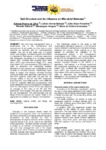Por favor, use este identificador para citar o enlazar este ítem:
http://www.alice.cnptia.embrapa.br/alice/handle/doc/1044375Registro completo de metadatos
| Campo DC | Valor | Lengua/Idioma |
|---|---|---|
| dc.contributor.author | SILVA, A. P. da | pt_BR |
| dc.contributor.author | BABUJIA, L. C. | pt_BR |
| dc.contributor.author | FRANCHINI, J. C. | pt_BR |
| dc.contributor.author | RALISCH, R. | pt_BR |
| dc.contributor.author | HUNGRIA, M. | pt_BR |
| dc.contributor.author | GUIMARÃES, M. de F. | pt_BR |
| dc.date.accessioned | 2016-05-03T11:11:11Z | pt_BR |
| dc.date.available | 2016-05-03T11:11:11Z | pt_BR |
| dc.date.created | 2016-05-03 | pt_BR |
| dc.date.issued | 2015 | pt_BR |
| dc.identifier.citation | In: Congresso Brasileiro de Ciência do Solo, 35., 2015, Natal. O solo e suas múltiplas funções: anais. Natal: Sociedade rasileira de Ciência do Solo, 2015. | pt_BR |
| dc.identifier.uri | http://www.alice.cnptia.embrapa.br/alice/handle/doc/1044375 | pt_BR |
| dc.description | Soil and crop management have a fundamental role in the maintenance and improvement of soil quality. The aim of this study was to qualify and quantify homogeneous morphological units (HMUs) in a dystroferric Red Latosol, in a 22-year experiment with treatments consisting of a no-tillage planting system (NT), notillage with chiseling every three years (NTC) and conventional tillage (CT), using crop rotation (CR) [with five different crop species in three years] and succession systems (CS) [only two crop species]. The cultural profile method was used as described by Tavares Filho et al. (1999). The determining factor in the morphological changes to the soil was the degree of mechanical intervention it was subjected to during preparation and planting. Higher volumes of compact soil were found in the profiles taken from treatments with a higher degree of tillage. The NT and NTC treatments presented HMUs with a continuous and cohesive structure and increased visible porosity at the surface, and continuous and cohesive units with lower porosity below this layer. The surface layer of the NT treatment presented free units made up of small and medium sized clods, and below this layer, compact, continuous units with little porosity. The soil management systems with crop rotation presented less compact units and roots with fewer morphological deformities than in the treatments with succession systems. | pt_BR |
| dc.language.iso | eng | eng |
| dc.rights | openAccess | eng |
| dc.title | Soil structure in different management systems. | pt_BR |
| dc.type | Artigo em anais e proceedings | pt_BR |
| dc.date.updated | 2018-02-14T11:11:11Z | pt_BR |
| dc.subject.thesagro | Manejo do solo | pt_BR |
| dc.subject.thesagro | Microrganismo | pt_BR |
| dc.subject.thesagro | Solo | pt_BR |
| dc.subject.nalthesaurus | Tillage | pt_BR |
| dc.subject.nalthesaurus | Soil microorganisms | pt_BR |
| dc.format.extent2 | 4 p. | pt_BR |
| riaa.ainfo.id | 1044375 | pt_BR |
| riaa.ainfo.lastupdate | 2018-02-14 -02:00:00 | pt_BR |
| dc.contributor.institution | ADRIANA PEREIRA DA SILVA, UNIPAR; LETÍCIA CARLOS BABUJIA, CNPq; JULIO CEZAR FRANCHINI DOS SANTOS, CNPSO; RICARDO RALISCH, UEL; MARIANGELA HUNGRIA DA CUNHA, CNPSO; MARIA DE FÁTIMNA GUIMARÃES, UEL. | pt_BR |
| Aparece en las colecciones: | Artigo em anais de congresso (CNPSO)  | |
Ficheros en este ítem:
| Fichero | Descripción | Tamaño | Formato | |
|---|---|---|---|---|
| Soilstructureanditsinfluence....pdf | 370.6 kB | Adobe PDF |  Visualizar/Abrir |









